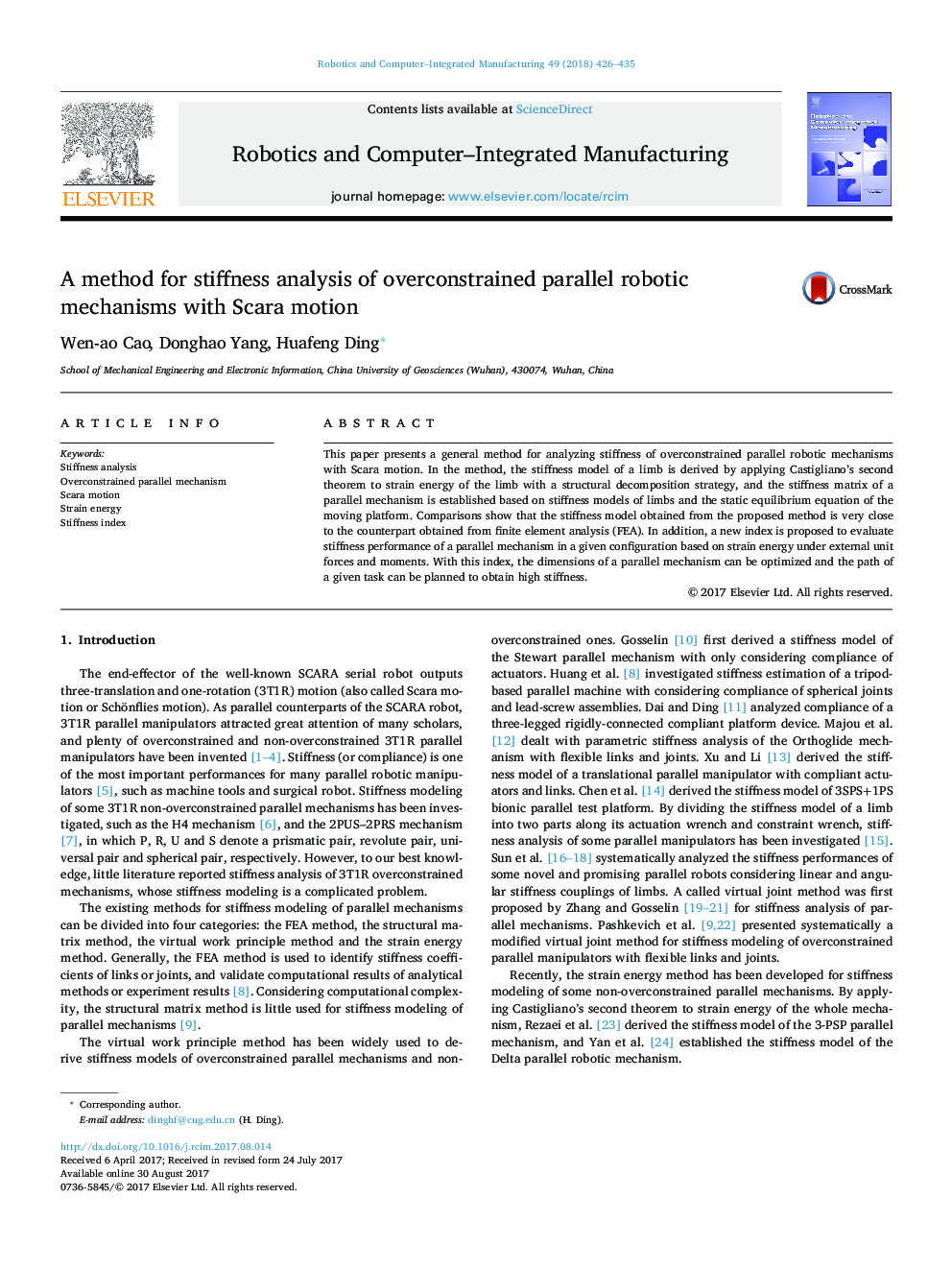| Article ID | Journal | Published Year | Pages | File Type |
|---|---|---|---|---|
| 4948963 | Robotics and Computer-Integrated Manufacturing | 2018 | 10 Pages |
â¢Stiffness modeling involves relatively low computational efforts.â¢The method can generate stiffness models with high accuracy.â¢The statically indeterminate problem is avoided solving in stiffness modeling.â¢Stiffness modeling of limbs is derived based on Castigliano's second theorem.â¢The proposed stiffness index has unified dimension and clear physical meaning.
This paper presents a general method for analyzing stiffness of overconstrained parallel robotic mechanisms with Scara motion. In the method, the stiffness model of a limb is derived by applying Castigliano's second theorem to strain energy of the limb with a structural decomposition strategy, and the stiffness matrix of a parallel mechanism is established based on stiffness models of limbs and the static equilibrium equation of the moving platform. Comparisons show that the stiffness model obtained from the proposed method is very close to the counterpart obtained from finite element analysis (FEA). In addition, a new index is proposed to evaluate stiffness performance of a parallel mechanism in a given configuration based on strain energy under external unit forces and moments. With this index, the dimensions of a parallel mechanism can be optimized and the path of a given task can be planned to obtain high stiffness.
